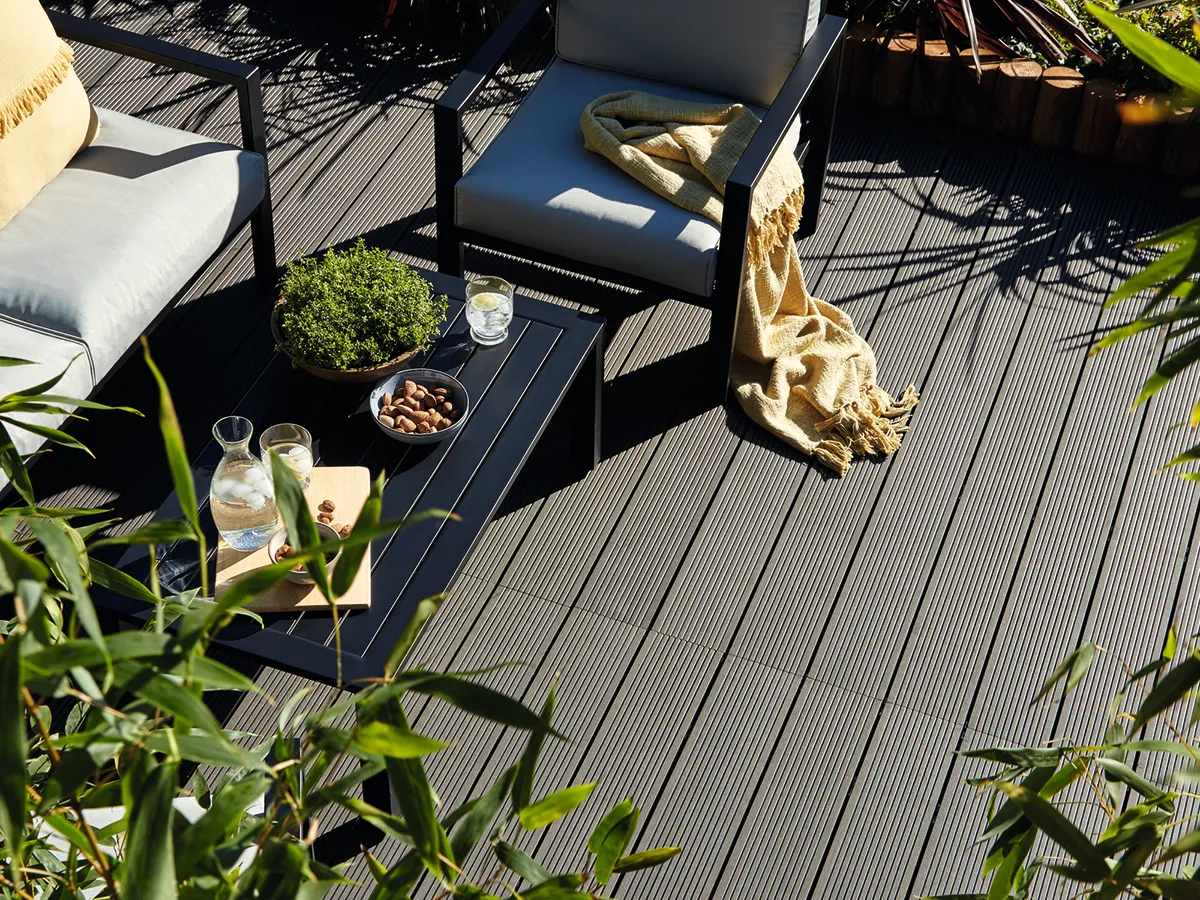Weather permitting, you’re bound to spend long days relaxing in the garden during the summer – eating, soaking up the sun and, hopefully, entertaining family and friends – so it’s important to get it looking its best, and installing a patio or decking can provide the perfect entertaining space.
You’ll need a level, stable surface for your furniture and, just as you’d replace tatty carpet or tiles inside, it makes sense to consider whether outdoor flooring requires sprucing up or upgrading. Painting faded wooden decking can make a world of difference, and a brand-new patio or deck will totally transform your garden. So, consider your options carefully before you go ahead.
Which is best - decking or patio?
Whether you opt for a deck or patio is a matter of taste, but there are various factors to bear in mind. Both increase usable outdoor space and are very durable, though paving requires less maintenance than traditional timber decking and offers a wider range of design possibilities.
Patios are installed on a sub-base close to the ground, providing better privacy from neighbours, and can be fitted flush with indoor flooring for an effortless transition between inside and out.
Decks are quicker to construct, resting on top of raised joists that can be elevated to make the most of a view. Unlike patios, they’re suitable for uneven or sloping ground and most materials are more forgiving underfoot if kids take a tumble.
How size and position could influence your choice

When planning your new deck or patio, think about its location, intended use and how it will fit in with the rest of your garden. Would you prefer a sunny exposed spot or one in partial shade, are you retaining or adding a lawn and flower beds, and how do you intend to incorporate existing trees and shrubs?
Make sure that it’s big enough to accommodate furniture, a barbecue and other kit, and for you and your guests to spread out. If there’s sufficient room, don’t rule out decking or paving a corner at the end of the garden as well as the space next to the house, together with a new path or walkway for access.
Which is the best material for patio?
From bricks and tiles to oversized slabs, there’s never been a greater choice of paving, and you’ll pay from £900 upwards to have a new patio prepared, supplied and laid. A natural stone, such as sandstone or limestone, is the most resilient material, available in many colours, sizes and shapes and with a riven or smooth finish.
Versatile porcelain can replicate real stone, tiling and even timber decking, and small clay pavers and cobblestones can be laid in intricate patterns. There are no hard and fast design rules but textured, smaller paving generally suits a more traditional setting, whereas large slabs are very modern. A non-slip surface will give you peace of mind.
Want to lay your own? Here's how to lay a patio
Which is the best material for decking and how much will it cost?
Sustainable and mellow, timber decking is made from hardwoods such as oak and teak, or cheaper softwoods like pine and spruce that are pre-treated for longevity. Look out for the Timber Decking and Cladding Association’s DeckMark as an assurance of quality, and budget for at least £1,000 for a fully installed deck, though building it yourself will cut costs.
Timber’s main drawback is its regular upkeep – a problem solved by installing composite decking, an environmentally-friendly alternative. ‘Composites work well in high-traffic family gardens, due to their low maintenance and durability,’ explains Charles Taylor, Sales Director at Composite Prime. ‘They also have the ability to stay free from cracks and splinters, increasing their lifespan and making them barefoot safe.’
Here's how to lay your own decking
How to maintain your patio/decking
Keep your patio in pristine condition by sweeping it regularly to remove leaves and other debris. Pull out weeds growing in cracks or damaged mortar and scrub any marks by hand rather than using a pressure washer. Wooden decking is prone to getting slippery, so brush away leaves, moss and standing water after downpours and fix anti-slip strips (from rawlinspaints.com). ‘It’s important you treat brand-new decking as you would old decking,’ recommends Matthew Brown, Technical Consultant at Sadolin. ‘Once it has been laid out, use a stain and protector, formulated specifically to protect the surface from the weather and mould growth. Reapply these once a year to keep your decking at its best.’
How to plan your outdoor room
Make the most of your patio or deck by treating it as an al fresco sitting room, containing many of the elements you’d find inside. If it extends out from the back of your house through bi-fold or sliding doors, stick to a similar colour scheme for a unified effect. As well as furniture, you’ll need lighting and a heat source so that you can sit outside for longer on chilly evenings. String up battery or solar-powered fairy and festoon lights, pop uplighters next to your plants and buy a fire pit that doubles up as a barbecue. Shading is also essential and, depending on budget, it’s worth investing in a sturdy parasol, a sail shade, a pergola or a retractable awning
‘Consider where the sun will hit the garden at different times of the day and think about any views that you want to enjoy or how you can create a private retreat without being overlooked. If you want your garden to feel like an outdoor room, it’s important to create a seamless flow from inside out.
'The design can incorporate your individual tastes, but it’s important to be sensitive to the style of your house, too. With the aesthetics in mind, it’s also important to research the different materials available to ensure you get the product right for you and your budget,' says Lee Dunderdale, Product Manager at Bradstone
